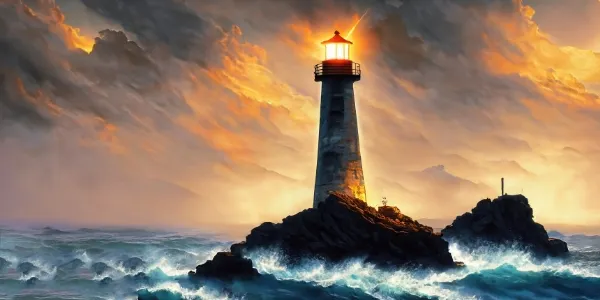Art is evolving, and the catalyst for this change is as surprising as it is digital. The AI painter, a term that once belonged to the realms of science fiction, is now a part of the art world, blending traditional brush strokes with pixels and algorithms. This intersection of technology and artistry is creating new pathways for artistic expression.
Understanding AI in Art
Artificial intelligence painters utilize artificial intelligence to create art. Programmers design these systems to interpret and mimic various artistic styles. By feeding an AI system a dataset of historical art, it learns to generate works that are visually similar but uniquely its own. This process opens a whole new world where technology meets creativity.
The role of AI in art is not to replace human artists but to augment the creative process. By analyzing vast amounts of data, these tools can suggest patterns, structures, and colors that might take much longer for a human artist to conceptualize. This collaboration between humans and machines produces fascinating results that reshape how one understands art.
The Creative Process of AI
The first step in the AI creative process is receiving input from the human collaborator. This input could be as simple as a theme or as complex as an emotion or narrative. Once the AI has a direction, it explores its learned database to create something new.
What’s intriguing about AI art is that each creation is a surprise. Even the programmers behind these AIs often can’t predict what the final product will look like. This element of surprise adds a layer of excitement and novelty to the creative process, making AI art unpredictable and uniquely compelling.
Technical Backbone: Machine Learning
AI art is made possible through machine learning, a type of AI that learns from data to improve over time. In art, machine learning algorithms analyze thousands of images, learning from styles, techniques, and the nuances of different art eras. This training allows AI painters to apply learned artistic principles in innovative ways.
The more data these AIs process, the more refined their art becomes. This is similar to how human artists evolve their style through years of practice and exposure to different influences. The difference, however, is the speed and efficiency at which AI can operate, absorbing centuries of artistic knowledge in a fraction of the time.
Challenges and Controversies
Despite its impressive capabilities, the rise of AI in art is not without its challenges. One major issue is the debate over the authenticity of AI-generated art. Can a piece that an AI created be considered genuine art, and if so, who is the real artist behind it? These questions highlight AI’s complex ethical and philosophical dilemmas in creative domains.
Moreover, there is concern about AI’s impact on the future of human artists. While many argue that AI will be a tool that complements human creativity, others fear it might replace artists in some areas, particularly in commercial and mainstream art production.
The Future of Artistic Collaboration
The integration of AI in art promises to unlock new creative potential. As AI technology advances, one can anticipate more sophisticated collaborations that might blend AI capabilities with human creativity in ways people have not imagined fully.
This evolving partnership could lead to new art forms and mediums, expanding the scope of what is considered possible in art. From digital sculptures to interactive murals, the possibilities are limitless. AI is not just reinventing artistic expression; it is expanding the very definition of creativity.
Adobe Firefly states, “You don’t need paint or hours of spare time to make a frame-worthy work of art, just an idea and the power of generative AI.”
In conclusion, as one witnesses the journey from pixels to painting, it’s clear that AI is not just a tool for artistic creation but a burgeoning artist in its own right. The fusion of AI and art is a testament to the endless possibilities of what can be achieved when technology meets human imagination. This is not just a new chapter in art history; it’s a redefinition of the creative landscape.
